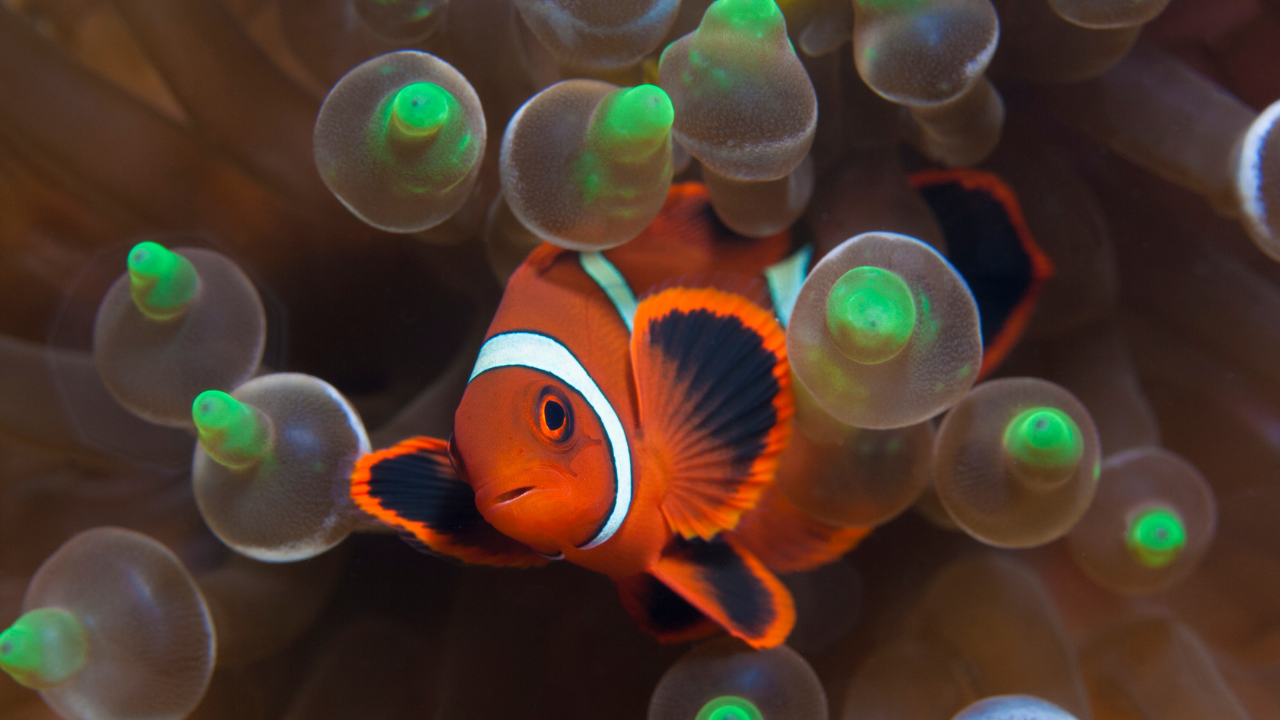
![]() Escrito por Ángel Ribas
Escrito por Ángel Ribas
6/8/2023 en Vida Marina
|
0 comentarios
The clown fish, better known as Nemo, is one of the most popular and recognized fish in the aquatic world. In addition to being the main character in Disney's Finding Nemo, this fish is a fascinating species with a unique history and behavior.
Clownfish are native to the Indian and Pacific Oceans and live in warm, tropical waters. They have an oval body and a large head and can grow up to 15 cm long. The most common colors of these fish are bright orange and white with black stripes throughout the body.
What makes these fish so special is their symbiotic relationship with sea anemones. Sea anemones are invertebrates that burrow and capture small animals. However, the clownfish is immune to these spines and can swim among the anemone's tentacles without harm. In fact, these fish are so comfortable in sea anemones that they often use them as refuge and spawning grounds.
The relationship between clowns and sea anemones is mutually beneficial. The fish provide the anemones with protection and food, and the anemone provides them with a safe place to live and reproduce. Additionally, clownfish help remove parasites and other debris from sea anemones. Another interesting feature of the clownfish is its hierarchical social system. Each clown pack has a dominant female, a breeding male, and several offspring. When the breeding male dies or is euthanized, the dominant female becomes the male, and the older, larger pup becomes the dominant female. This process is called sequential hermaphroditism.
Despite their popularity, clownfish face threats in the wild. Overfishing and habitat degradation are serious problems affecting many species of fish, including clownfish. Additionally, capturing clownfish from the wild for use in aquariums can also harm wild populations.
In short, the clownfish is a unique and fascinating species with a unique history and behavior. Their symbiotic relationship with sea anemones and their hierarchical social system make them an attractive species in the aquatic world. However, it is important to remember that the protection of these species is essential for their long-term survival and for the health of the marine ecosystem as a whole.
Comments